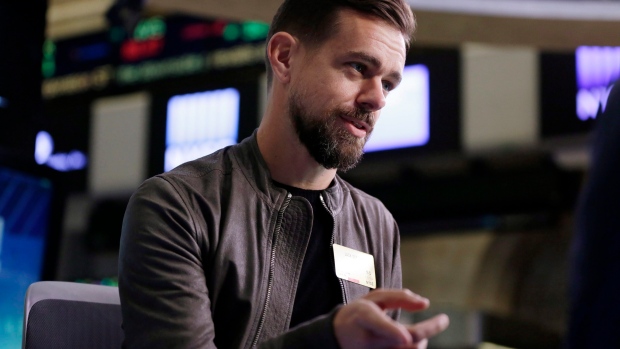Oct 21, 2016
Wall Street still waiting for CEO Jack Dorsey to 'make Twitter big'

Exactly one year ago, Twitter co-founder and CEO Jack Dorsey announced he was giving one-third of his personal Twitter stock to employees. It was viewed as a sign of confidence in the company he helped to create, not to mention a morale booster. In a tweet, Dorsey noted “I’d rather have a smaller part of something big than a bigger part of something small. I’m confident we can make Twitter big.”
Since Dorsey’s announcement, Twitter’s stock has declined by more than 40 per cent. Dorsey’s generous contribution to employees has sunk in value (on paper), from US$200 million to US$115 million. The drop has been fueled by underwhelming results and, more recently, disappointment tied to the lack of apparent takeover offers by some of the company’s rumoured suitors.
Against that backdrop, Twitter will report third-quarter earnings results on Oct. 27. And the stage is set for big questions from Wall Street on the company’s road ahead.
“It seems to me that there are two big priorities for Twitter,” said Greylock Partners’ Josh Elman, who previously led Twitter’s product team, in an interview with BNN.
“One, making it so that all of the people who are still interested in trying Twitter get to a good, personalized experience faster. And two, that those who are already on Twitter have a safer experience, given some of the negativity.”
Disney reportedly decided against pursuing an acquisition of Twitter because of hate speech and abuse that is sometimes seen on the social media platform.
TWITTER’S GROWTH CHALLENGE
During Elman’s time leading Twitter’s product team, the micro-blogging site grew by more than 10 times. These days, Twitter’s growth story is much different.
As of last quarter, it had 313 million average monthly active users. That’s one per cent higher than the 310 million users it had in the same period a year ago. By comparison, Facebook had more than 1.7 billion users in its most recent quarter, representing a 15 per cent increase from last year.
One obvious positive for Twitter is its runaway relevance in the world of real-time events. The obvious example is the U.S. presidential election. Donald Trump’s must-read tweets can be evidenced through the growth in his following, from 2.6 million followers when he announced his bid for president, to his current base of more than 12.6 million users.
Meanwhile, one of the ways Twitter has been trying to boost engagement is through live video, as evidenced through programming tie-ups with partners like the NFL.
“It’s a natural extension of what we’ve been trying to accomplish for years, which is this live connection to culture,” Twitter Canada head Rory Capern told BNN in a recent television interview. “People have been turning to Twitter for a long time to enjoy that tweet stream that complements TV content. In this case, we were able to bring it right to the Twitter screen and incorporate it into the experience. I think that represents an opportunity to get in front of an audience that is sometimes hard to reach.”
INVESTORS WATCHING CLOSELY
Still, if history is any guide, Twitter’s upcoming earnings report could be roughly received by investors. In the eleven times that Twitter has reported earnings since going public in November 2013, its stock has declined in nine of the trading days following the results. And on average, the stock has declined 9 per cent in those trading days, which includes a two-day drop of more than 27 per cent last year, following an earnings leak and a disappointing outlook.
Most analysts who track the company’s stock are taking a wait-and-see approach, with the average 12-month target price sitting below US$17 a share.
Whatever the outcome for Twitter, Wall Street is watching closely. In fact, brokerages have published more research reports on Twitter this fall than for Microsoft, Exxon and Johnson & Johnson respectively (three of the five most influential companies in the S&P 500).







